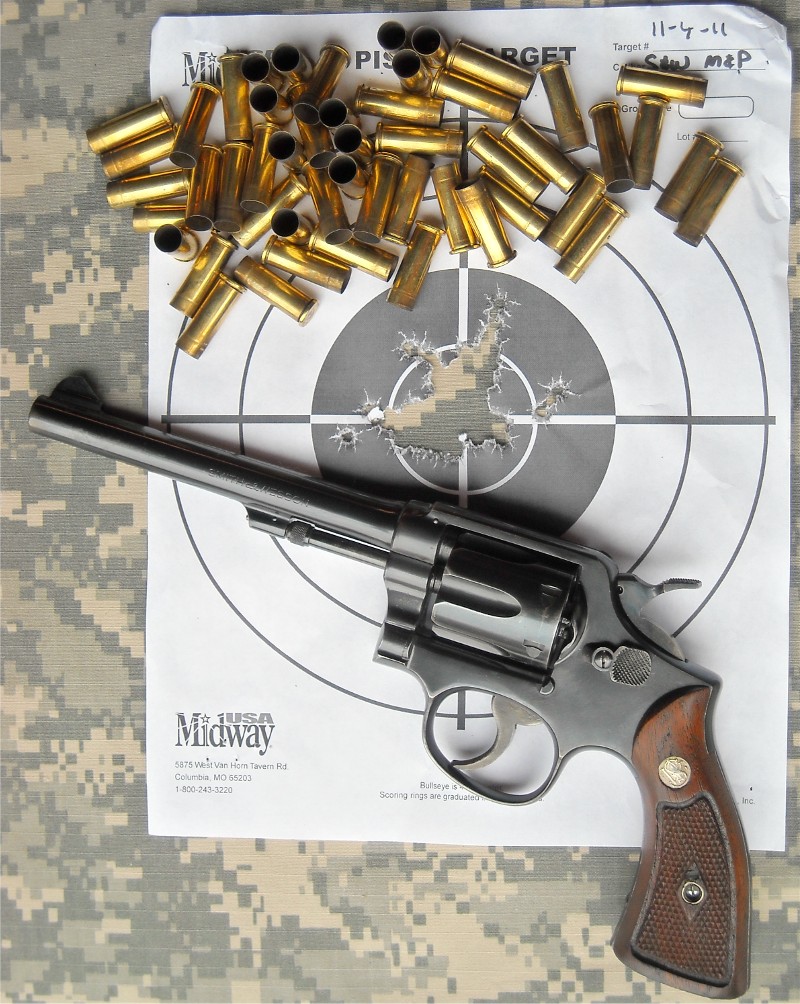You are using an out of date browser. It may not display this or other websites correctly.
You should upgrade or use an alternative browser.
You should upgrade or use an alternative browser.
How safe is a S&W pre-10 with modern cartridges?
- Thread starter FLChinook
- Start date
I would worry more about being abducted by aliens than I would about shooting ANY "modern" 38 Special ammo in ANY Model 10/M&P that didn't just flat out look like a total piece of crap. P+ ammo is just not that hot.
Personally I wopuldn't shoot P+ but that's only because I'm not going to waste the money to buy the stuff to punch a hole in a piece of paper.
Personally I wopuldn't shoot P+ but that's only because I'm not going to waste the money to buy the stuff to punch a hole in a piece of paper.
Last edited:
hardworker
New member
+P is only about a 10% increase in pressure. The most you'll do is wear the gun out faster, and empty your wallet faster.
carguychris
New member
Although the S&W revolver manual advises against shooting any pre-model-numbered S&W K frame with .38Spl+P, IMHO the advisory is better tailored to two classes of guns in particular:
- Pre-1930s guns without heat-treated cylinders. The steel used in these guns is noticeably softer and they WILL "shoot loose" faster than later models.
- WWII production Victory models. S&W had documented quality control problems during this period.
Considering that Pre model 10 covers from 1899 to 1956... I think it might depend on how "Pre" we're talking about here.
I certainly wouldn't sweat it in a Post War Pre 10.
Might think twice in a real early M&P
Exactly.
When I started in police work, most of the guns we issued were late 40's and 50's vintage, and they shot the +P we started issuing in the 70's just fine.
Mike Irwin
Staff
"Pre-1930s guns without heat-treated cylinders. The steel used in these guns is noticeably softer and they WILL "shoot loose" faster than later models."
I saw a circa 1910 Military and Police with a split cylinder, courtesy of an unknown quantity of +P rounds.
I won't even shoot jacketed bullets in my 1922 Military and Police.
"WWII production Victory models. S&W had documented quality control problems during this period."
I'd be FAR more worried about someone dropping a +P into one of the British contract revolvers that was "converted" to .38 Special by reaming the cylinder shoulder, leaving it oversized at the base.
As far as QC problems during the war, I've never heard it claimed that those issues went to either material quality or heat treating quality, only fit, finish, and assembly issues based on the speed required for wartime production and the relatively high number of new employees.
I saw a circa 1910 Military and Police with a split cylinder, courtesy of an unknown quantity of +P rounds.
I won't even shoot jacketed bullets in my 1922 Military and Police.
"WWII production Victory models. S&W had documented quality control problems during this period."
I'd be FAR more worried about someone dropping a +P into one of the British contract revolvers that was "converted" to .38 Special by reaming the cylinder shoulder, leaving it oversized at the base.
As far as QC problems during the war, I've never heard it claimed that those issues went to either material quality or heat treating quality, only fit, finish, and assembly issues based on the speed required for wartime production and the relatively high number of new employees.

